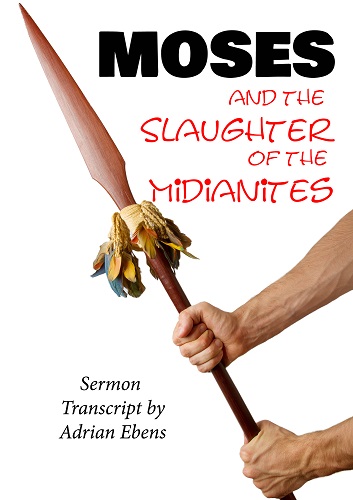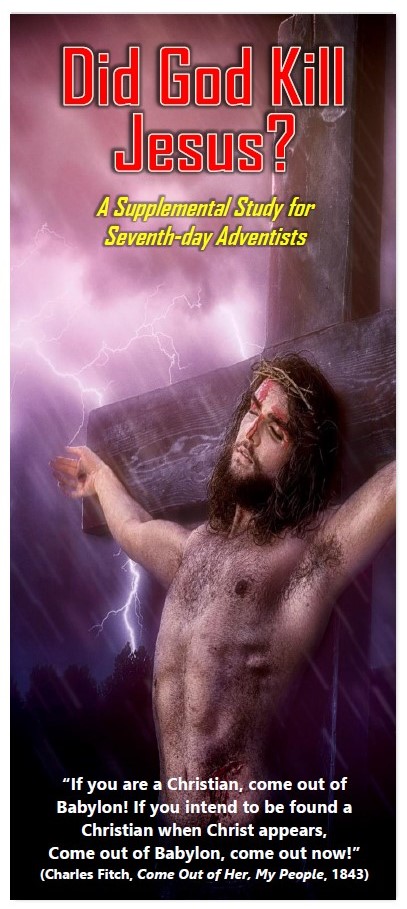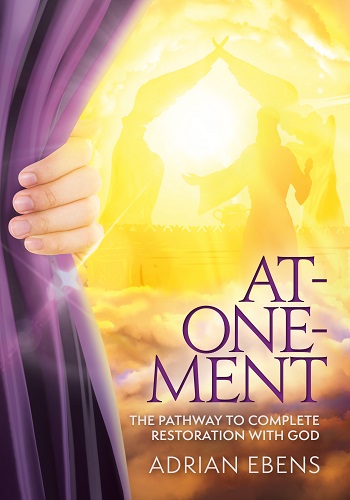Arius, Athanasius & the Immutability of God
There are few Christians who realize the extent to which Platonic philosophy has corrupted the doctrines of the early Church. The Nicene Creed, which is the doctrine of the Trinity, did not remain unaffected. While this is common knowledge to theologians outside of the S.D.A Church (and perhaps inside it as well); it is virtually unknown to layman of all denominations. One doctrine that was grafted into the early Christian Church directly from Platonic philosophy, is the doctrine of the immutability of God. Now, while my understanding of the `immutability' of God means that the character of God does not change, this differed dramatically to Platonic thought, which was of a dualistic nature and consequently corrupted Christian perceptions on the character of God.
In some accounts of Greek mythology, the last of the divine emanations which proceeded from the pantheist One God in all was called Sophia, or `Wisdom', who later became equated by Gnostics of the first and second centuries with Christ. Sophia aspired to the `hidden' knowledge, or gnosis of the One which was forbidden to her, at which she was thereby cast out of the divine realm. In her distress she formed the material plane of existence in which men preside. At this, she became a demi-urge, or intermediary between man and God. Early Church Fathers such as Origen Adamantius (185-254) were influenced by this depiction of Sophia as a demi-urge, by depicting Christ as a subordinate God who was an intermediary between the divine world, and the material which He was considered to have created.
As Sophia was considered to be the last of the divine emanations, she was also thought to have `forgotten' most of her inherent divinity. Consequently the material universe which she created had lost all knowledge, or `gnosis' of its own inherent divinity, and was considered to be evil in character. While this may sound strange to us today, this pagan conception of the `World Soul' depicted all things, living or not as being a small part of God, and therefore divine by nature. Thus the earth was believed to have a life of its own which has `forgotten' its own divinity.
As men reside on the material plane of existence which was believed to be evil, then the material bodies of men were believed to weigh down the `good' soul (which is a reflection of the divinity of the One), and which aspires to return to the One at death. Therefore the God of Plato was considered to be immutable, for to be even aware of the material plane in which mortal man resides would constitute a corruption of His divine `goodness' (think `essence') - and God could no longer be God! This Greek philosophical idea of the `immutability' of God was made manifest in the early Church with the conception that the divine `essence' of God Himself is simple; which is to say that:
`If a being is simple, then it has no parts. If a being has no part, then it cannot change (since there is nothing for it to lose or gain). If a thing cannot change (is immutable), then it must be pure actuality in the sense that it cannot possess any potentiality. "Before" and "after" would be inapplicable to such a being, a point which entails that any simple being must be timeless.' (`The Concept of God', R. Nash, 1983, p. 22.)
According to this strictly Platonic view of immutability, for God not to be `simple' would constitute a corruption of the divine essence - which the Greeks called `ousia'; with the later Latin conception of the Christian Trinity being known as Three `substances'(hypostasis) or Persons, and one `essence' (`ousia'). For this reason, the Platonism which influenced Arius and Athanasius determined that both men believed that if Christ manifested Himself as a mortal man, then this would constitute a corruption of the divine essence of God. This was unthinkable, for this constituted a change of form from simplicity, to multiplicity! Furthermore, as this would mean that as God is actually aware of that which was considered to be evil - then this also constituted a corruption of the divine essence!
This necessitated that the a priori reasoning which Arius and Athanasius both held, was that Christ could not manifest His divinity to humanity in a `veil of flesh', as the flesh itself would constitute material substance - which would then constitute a corruption of the divine `essence' of God by material substance and multiplicity. For the Greeks did not believe that God can change to the extent that Christ can exist in the material and divine pleroma at the same time, as this would constitute a change from simplicity to multiplicity. To put it plainly, the idea that the incarnate Christ could manifest Himself as the divine Son of God, while at the same time be `made in the likeness of sinful flesh' (Rom. 8: 3) was `foolishness to the Greeks' (1 Cor. 1: 23). Arius and Athanasisus approached this problem in diametrically opposite ways which in fact failed to solve it, for the a priori reasoning processes of both men led them to making incorrect assumptions in regard to the immutability of God:
`It is interesting to note that neither the Arians nor Athanasius solved the problem by abandoning the concept of divine immutability.' (`God under Fire: Modern Scholarship Reinvents God', D. Huffman, D. Johnson, 2009, p. 235.)
Following after the theology of Origen of the Catechetical School of Alexandria, Arius took the subordinationist view that Christ could not be `full god', but instead insisted that He must be `strong god' who was created by His Father. This paralleled Christ as Sophia, the demi-urge in Platonic philosophy who had created fallen man; by picturing Him as an intermediary between heaven and earth. Arius viewed Him as being little more than a glorified man who had His divinity conferred upon Him in advance, for the Father foresaw that He would be obedient to His commandments.
By presenting Christ as the Christian equivalent of the Platonic Sophia, Arius managed to quarantine Christ from the corruption of the material world, which would otherwise corrupt His divine nature and thus disqualify Christ as our mediator. By this way, the simplicity of the One God from which Christ was created - the Father - was preserved; for by presenting Christ as a demi-urge who created the world, this could not possibly affect the immutability of the Father, as He would be completely oblivious of this taking place at all! Or of our existence, for that matter! It was through the doctrine of immutability, that the completely aloof and thoroughly remote God of the Greeks found its way into the Creeds of Christendom, and paved the way for the doctrinal formula of `works' plus `faith' equates to salvation. For in order for man to be saved, he first must be noticed. But as it is impossible for the Father to notice him, then his only option is to participate in the life of Christ by the doing of `good' works that are acceptable to the Father.
Athanasius took the opposite track. He followed after Clement of Alexandria (c. 150-215), who was Origen's predecessor - and more of a pure Platonist than was Origen, as Origen's views followed after Aristotle, the pupil of Plato, and (due to his rationalistic philosophies) is regarded as the father of modern science. Athanasius believed that Christ was completely divine, and avoided corrupting His divinity by conceiving of the idea that Christ manifested Himself in the pre-lapsarian human `nature' of Adam - or so-called `sinless flesh'. This quarantined Christ from corruption, and maintained the `simplicity' of the Godhead; for it meant that the Godhead retained the simplicity of its essence by insisting upon the conception that Christ must be self-existent - which subsequently led the Three Cappadocian Fathers to formulate the orthodox belief that the Trinity must consist of Three Persons who are `con-substantial, co-existent, and co-eternal', during the Council of Constantinople in 381 A.D, at which the Trinitarian doctrine became settled in form.
It was in this way that the conception of perfection (immutability) and imperfection (mutability) became applied to the early Creeds of Christendom, for beginning with Athanasius during the Council of Nicea in 325 A.D, the Patristic Fathers eventually fell into line with his conception that the incarnate Christ could not manifest Himself in a body of material flesh, as this would constitute a change in the `essence', or character of God. Athanasius and his mentor, Bishop Alexander of Alexandria reasoned that if Christ was self-existent, then it was impossible for Christ to manifest Himself in flesh which constituted the imperfection of material substance, as this would imply that the ousia, or `essence' of God is `mutable' (imperfect) - and God could no longer be considered to be `simple' and without multiplicity. Their premise was an adaptation of the belief system of a cult which flourished in the second century and were known as Docetists. These gnostic Christians believed that the incarnate Jesus only appeared to be human, and manifested Himself in a body which was merely an illusion - for if Christ had manifested Himself in a body of material substance, then He could no longer be considered to be `simple', and thus immutable.
Ironically, although Docetism was condemned by the First Council of Nicea in 325 A.D as heretical, the platform from which it originated - the immutability of God - came to be regarded as orthodox, and became the platform upon which Catholic perception of the character of God was based. Therefore, when in the third century Origen declared that `God is Eros' - what he really meant is that `God is immutable'. By the same token, when Augustine synthesised `Agape' with `Eros' very early in the fifth century, he was declaring this very same thought - but added to it the idea that not only is the substance of God immutable, (for this thought is bound in the expression that `God is Eros'), but His character is immutable as well - which is analogous of the expression that `God is Agape'.
This dualistic conception of `perfectibility', or the immutability of the material substance of God was applied to the Trinity as a single unit during the First Council of Constantinople in 381 A.D. More specifically, it was applied by the Three Cappadocian Fathers to the Trinity as a monad, or single `unit' of `substance', which describes the `essence' of the Triune Godhead - which then necessitated that they then specifically apply this conception of `immutability' to the Holy Spirit. They reasoned that because God is `simple', then God must also be eternal and self-existent. But as each Person of the Godhead is equally `simple' - which is to say eternal and self-existent; then the three Persons of the Godhead must also be `simple', and thus consist of the same `divine essence'; which is to say that in the parlance of the settled Creed of 381 A.D. - they must be con-substantial, co-equal and self-existent with each other. This conception of the Triune Godhead resulted from the strictly Platonic (and thus dualstic) conception of the `immutability' of God, for Platonic and hence Patristic thought teaches that this applies not only to His character, but to His material substance as well and eventually became reflected in the Creeds of Christendom after the Nicene Creed became settled in form in 381 A.D.
If the majority of non-Trinitarian S.D.A's were to actually study the original creed in the form that it was given in 325 A.D, most would be surprised to find that they would have little trouble in confessing to the tenets of it, for to a certain degree it mirrors the Apostles Creed; which in fact was the creed which most churchmen of that time wished to confess to and is thought to have been constructed by Lucian of Antioch. (The fact that Arius was his pupil does not mean that the two men agreed on Arius' interpretation of the `essence' of the Godhead, for Lucian was no Platonist!) The problem instead lay in the interpretation of the Nicene Creed - most specifically in relating the Nicene Creed to the doctrine of divine immutability, and how this should be interpreted. It was left to the Cappadocians to apply the doctrine of `immutability' to the Holy Spirit; for by using the premise that as the Holy Spirit is active in the economical function of the Trinity, then therefore the Holy Spirit must be divine in exactly the same sense that the Father and Son are divine - or the Godhead could not be considered to be simple. Therefore the Holy Spirit must be believed to be a Divine Person, in precisely the same sense that the Father and Son are considered to be Divine Persons. Once this was sorted out, the Nicene Creed then became settled in form as the truly apostate confession of faith that it is!
|
|
Notice what the finalised Creed says about the `Holy Ghost', for in stating that the Holy Ghost `is the Lord and giver of life . . . and is worshipped and glorified', the Trinitarian Holy Spirit takes upon Himself the economical function of Christ. But this is entirely logical, for in Trinitarian thought, the Holy Spirit is perceived as God in the highest sense, and therefore shares in these functions of salvation and redemption from sin. But as the Bible teaches that the Holy Spirit is not a tritheistic/modalistic Person, but is instead the Holy Spirit or Presence of the Son and the Father (in precisely the same sense of the Shekinah Presence of ancient Israel being the literal Presence of God), then within this statement we see the seeds of Pentacostalism, for while the Bible teaches ` For there is one God, and one mediator between God and men, the man Christ Jesus' (1Ti 2:5) - this version of the Nicene Creed teaches that our mediator is the Third Person of the Holy Spirit. Thus, the final version of this creed makes the Third Person of the Godhead into another mediator between God and man and counterfeits the work of Christ!
The following statement addresses the mysticism of Gregory of Nanzanius, who was one of the Three Cappadocian (Greek Orthodox) Fathers, who formulated the section of the Nicene Creed on the Holy Spirit:
`Ultimately, however, the Trinity only made sense as a mystical or spiritual experience: it had to be lived, not thought, because God went far beyond human concepts. It was not a logical or intellectual formulation but an imaginative paradigm that confounds reason. Gregory of Nanzanius made this clear when he explained that contemplation of the Three in One induced a profound and overwhelming emotion that confounded thought and intellectual clarity.
"No sooner do I conceive of the One than I am illumined by the splendour of the Three; no sooner do I distinguish Three than I am carried back into the One. When I think of any of the Three, then I think of him as the whole, and my eyes are filled, and the greater part of what I am thinking escapes me." ' (`A History of God', K. Armstrong, pp. 141, 142. Quotation Gregory of Nanzanius, `Orationes', 40, 41. )
This mysticism of the Greek Fathers influenced the theology of the founder of the Jesuits, St. Ignatius of Loyola, the `Father' of theistic evolution, the Jesuit Tielhard de Chardin and is found `alive and kicking' within Pentacostal Churches today, in the manner by which the Holy Spirit is depicted as `caritas' (which is a corruption of the character of God), and as counterfeiting the intercessory work of Christ in the Most Holy Place.
My point is this - most non-Trinitarian S.D.A's would be surprised to find that they would have little trouble confessing the 325 A.D version of the Trinity, as the furore was over the `substance', or divine `essence' of Christ (which most non-Trinitarians could confess to); and not about the modalism/tritheism which we see today. This came later, when these elements of this Creed were inserted after the first Council of Constantinopole (381 A.D) in the form of the Athanasian Creed. The possible exception to this early form of the creed being free from the contamination of pagan sources would be the phrase `light from light, which suggests possible Manicheanistic elements in its formation:
`Manicheans believed Christ had come from the God of the Kingdom of Light to show people the truth about the good within them and how to free it, but they did not see Christ as the only revealer . . . (`The Catholic Church: A Brief Popular History', C. Stewart, 2008, p. 91.)
These conceptions found their way into neo-Platonism, where:
`At the heart of the outlook is the notion of light as fons et origo (source and origin) of all created things - an idea that can be traced back to the earliest creation myths. It provided the basis of Neo-Platonic and Early Christian meditations about the Creator and inspired the light worship of the Manicheans.' (`Disclosing Horizons: Architecture, Perspective and Redemptive Space', N. Temple, 2006, p. 81.)
So at least this portion of the original Nicene Creed is suspect.
What we cannot confess to, is the 381 A.D. version of that Creed, and the later Athanasian Creed; which is thought to have originated in the fifth century, sometime after Augustine wrote `On the Trinity' in 415 A.D, as it uses the exact terminology of Augustine. The Athanasian Creed, which is the statement of faith upon which the S.D.A `28 Fundamentals' is based, incorporates the settled form of the Nicene Creed, as well as confesses the construction that the Three Cappadocians gave on the unity of the Godhead, which is:
`That we worship one God in Trinity, and Trinity in Unity; Neither confounding the Persons; nor dividing the Essence. For there is one Person of the Father; another of the Son; and another of the Holy Ghost. But the Godhead of the Father, of the Son, and of the Holy Ghost, is all one; the Glory equal, the Majesty coeternal. Such as the Father is; such is the Son; and such is the Holy Ghost. The Father uncreated; the Son uncreated; and the Holy Ghost uncreated. The Father unlimited; the Son unlimited; and the Holy Ghost unlimited. The Father eternal; the Son eternal; and the Holy Ghost eternal. And yet they are not three eternals; but one eternal. As also there are not three uncreated; nor three infinites, but one uncreated; and one infinite . . . . And in this Trinity none is before, or after another; none is greater, or less than another. But the whole three Persons are coeternal, and coequal. So that in all things, as aforesaid; the Unity in Trinity, and the Trinity in Unity, is to be worshipped. He therefore that will be saved, let him thus think of the Trinity.'
Unfortunately, it is beyond the scope of this document to examine how the Trinity came to present Athanasius' conception of a `Christ' who is exempt from sin manifesting Himself to fallen humanity. Suffice to say, though - the Athanasian Creed (which, by the way, was not written by Athanasius) reflects this, and what is considered to be `orthodox faith' presents us with a Christ who has been quarantined from being tempted by sin - which of course raises grave questions in relation to the salvation of those who believe this. Unfortunately, this is the confession of faith which over 90 percent of our Pastors now adhere to, is quietly attested to by the General Conference - and is the result of embracing LeRoy Froom's apostate tome entitled `Questions on Doctrine'!





